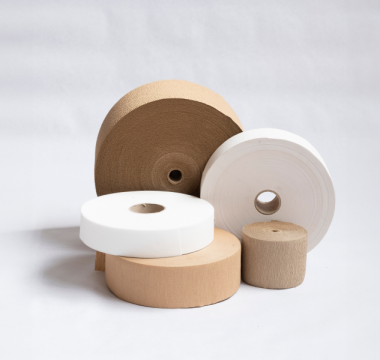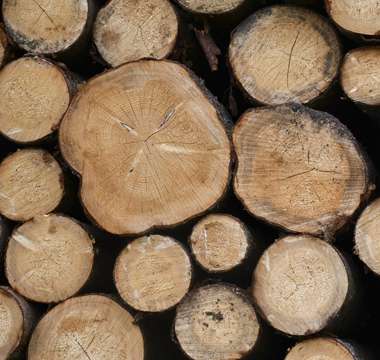Pack Safely: Protection during transport.
In packaging, crepe paper has become a popular choice for protecting fragile products during transport. Its ability to wrap around objects and absorb impact makes it ideal for secure shipments. This flexible, elastic and strong material can conform to the shape of items, providing a protective layer that minimises the risk of damage during handling and transportation.
One of the main advantages of crepe paper in packaging is its ability to absorb impact. This property is especially useful when shipping delicate products, such as glass, ceramics and electronic components, which require extra care to avoid breakage or damage. By wrapping these objects in crepe paper, a shock-absorbing barrier is created that disperses the energy of shocks, protecting the contents from possible impacts.
At Arrosi, we have specialised crepe paper packaging services to ensure optimum protection of your products during transport. For more information, please visit our packaging section.
In addition to its protective ability, crepe paper is remarkably lightweight. This feature is beneficial not only for product protection, but also for reducing the overall weight of the package. By decreasing the weight of the packaging, significant savings in shipping costs can be achieved, as transportation rates are often based on the total weight of the packages. Also, lower weight helps to reduce fuel consumption during transport, which in turn reduces the carbon footprint associated with shipping.
Pallet wrapping
In the intricate web of logistics, where efficiency and load protection are priorities, crepe paper emerges as an indispensable ally in the pallet wrapping process. Its versatility and strength make it a popular choice in the industry for tasks such as masking and surface protection, extending beyond production lines, embracing the complex logistical web with innovative and sustainable solutions.
Just as in manufacturing it ensures precise and smear-free application during painting and coating processes, in logistics, crepe paper stands as a protective shield for cargo in transit. By carefully wrapping pallets with crepe paper, a strong barrier is created to prevent damage caused by knocks, chafing or adverse conditions during transport. This additional layer of security not only ensures product integrity, but also minimises the risk of loss or waste during logistical handling.
In addition to its positive impact on the environment, crepe paper offers tangible benefits in terms of efficiency and economy. Its ability to conform to different shapes and surfaces enables accurate and secure wrapping, reducing handling times and minimising costs associated with load damage. In addition, its soft and flexible texture prevents scratches and surface damage to products, ensuring they arrive at their destination in optimum condition, ready for distribution or sale.
Hygiene and Protection: Crucial Use in the Medical Sector
In the medical field, crepe paper has become an essential component in the manufacture of disposable products such as dressings and bandages. Its ability to maintain sterility and absorb liquids is crucial in healthcare environments, where hygiene and infection prevention are a priority. This versatility and functionality has led to its widespread adoption in a variety of medical products that play a vital role in everyday healthcare.
One of the most important characteristics of crepe paper in medical applications is its ability to maintain sterility. In the manufacturing process of dressings and bandages, it is essential that the materials used are sterile to prevent the introduction of pathogens into open wounds. Crepe paper can be treated and packaged in a way that maintains its sterility until the time of use, thus ensuring a safe environment for wound healing.
Crepe paper is highly absorbent, making it ideal for products that need to manage wound exudation. Dressings and bandages made from crepe paper can absorb fluids efficiently, keeping the wound dry and promoting an environment conducive to healing. This property is especially important in the management of acute and chronic wounds, where moisture control is a key factor in patient recovery.
Natural Protection: Benefits in Agriculture
Agriculture has also found great utility in crepe paper, which is used as a protective material for plants and crops. This versatile material offers several advantages that are especially valuable in agricultural production, where environmental conditions can be unpredictable and adverse.
One of the most important properties of crepe paper in agricultural applications is its ability to retain moisture. During the cultivation process, maintaining an adequate level of moisture in the soil and around the plants is crucial for their growth and development. Crepe paper, when used as a ground cover or directly on plants, can help conserve moisture, reducing the need for frequent watering and ensuring that plants have constant access to necessary water. This is particularly beneficial in regions with dry climates or during periods of drought, where efficient water management is vital.
Crepe paper acts as a protective barrier against mechanical damage. Plants and crops are often exposed to a variety of factors that can cause damage, such as wind, heavy rain, hail and animal action. By wrapping or covering plants with crepe paper, an additional layer of protection is provided that can cushion these impacts, minimising the risk of physical damage and ensuring that plants remain intact and healthy.
Conclusion
Crepe paper is a versatile and essential material in a variety of industries. From protection in packaging to use in manufacturing and agriculture, crepe paper proves its value in multiple applications. To discover how our crepe paper packaging services can benefit your business, visit our services page.




